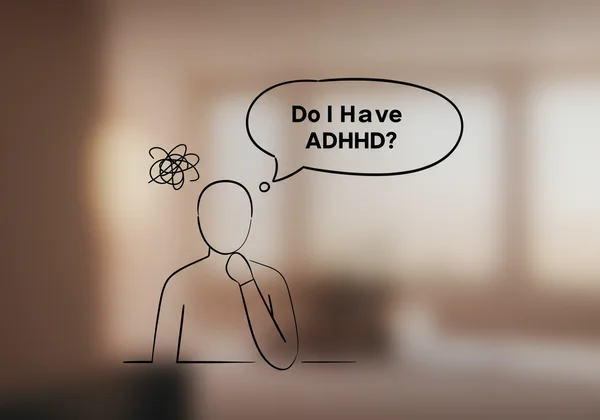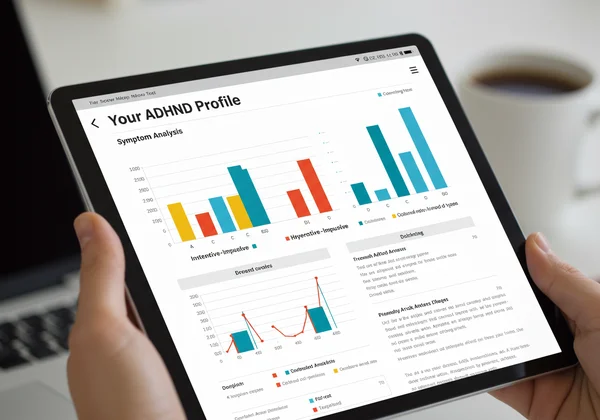ADHD Test: Discovering Inattentive, Hyperactive, and Combined Types
Are you or a loved one struggling with focus, hyperactivity, or impulsivity? You might be asking yourself, Do I have ADHD? This question is a common starting point for millions of adults and parents who notice persistent challenges in daily life. ADHD symptoms can vary wildly, often leading to confusion and misdiagnosis. Understanding the distinct types of Attention-Deficit/Hyperactivity Disorder is the crucial first step toward clarity and finding the right support. Here, we'll break down the three main types of ADHD, helping you spot potential signs and empowering you to understand your unique profile.
Feeling overwhelmed on this journey? You're not alone. An initial ADHD test can provide valuable insights into your experiences. This article will help you understand what those experiences might mean by breaking down the different types of ADHD. Ready to begin your journey to clarity? You can take our confidential online ADHD screener to take the first step.

What Are the Main Types of ADHD?
Attention-Deficit/Hyperactivity Disorder (ADHD) is not a one-size-fits-all condition. It is a neurodevelopmental disorder that affects executive functions like attention, impulse control, and organization. The way these challenges manifest can differ significantly from person to person. Professionals use a standard guide to understand and categorize these differences, ensuring a consistent approach to evaluation.
The Diagnostic Framework: Understanding DSM-5 Criteria
To bring clarity to diagnosis, clinicians refer to the Diagnostic and Statistical Manual of Mental Disorders, 5th Edition (DSM-5). This guide, published by the American Psychiatric Association, outlines the official criteria for diagnosing mental health conditions. For ADHD, the DSM-5 describes three distinct presentations (or types) based on the patterns of symptoms an individual has shown over the past six months. Understanding these types is key to recognizing how ADHD might be affecting you or your child.
Understanding Inattentive ADHD Symptoms (Predominantly Inattentive Presentation)
Often overlooked, especially in girls and adults, the Predominantly Inattentive presentation of ADHD is characterized by significant difficulty with focus and organization. People with this type are not necessarily lazy or unmotivated; their brains simply struggle to sustain attention, follow through on tasks, and filter out distractions. This was once commonly referred to as ADD (Attention Deficit Disorder), but that term is now outdated.
Common Signs of Inattention in Adults & Adolescents
In adults and teenagers, inattentive ADHD can be mistaken for anxiety, mood disorders, or even personality traits. These signs of inattention often impact work, higher education, and relationships. Common symptoms include:
-
Making careless mistakes at work or in schoolwork.
-
Struggling to sustain focus during long meetings, lectures, or reading.
-
Appearing not to listen when spoken to directly, as if their mind is elsewhere.
-
Difficulty following instructions and finishing projects or chores.
-
Struggling with organizational skills, such as time management and keeping belongings in order.
-
Losing essential items like keys, wallets, phones, and paperwork frequently.
-
Being easily distracted by unrelated thoughts or external stimuli.
-
Forgetfulness in daily activities, such as paying bills or returning calls.

How Inattention Appears in Children
In children, inattentive traits can be less disruptive in a classroom, leading to them being labeled as "quiet daydreamers" rather than being identified as needing support. A parent might notice their child struggles with things other kids find simple. If you are a parent, an ADHD test for kids can offer initial insights. Signs often include:
- Failing to give close attention to details on homework.
- Trouble holding attention on play activities or tasks.
- Losing school supplies, toys, or books.
- Appearing forgetful and disorganized with their daily routine.
Exploring Hyperactive-Impulsive ADHD Symptoms (Predominantly Hyperactive-Impulsive Presentation)
This is the presentation most people picture when they think of ADHD. It is characterized by near-constant movement, restlessness, and a lack of impulse control. While the hyperactivity may become less overt with age, the feelings of inner restlessness and impulsivity often persist, creating unique challenges for adults.
Hyperactivity & Impulsivity in Adults
In adults, the boundless energy of childhood hyperactivity often transforms into a persistent feeling of being "on the go." Hyperactivity & impulsivity can manifest in more subtle but equally challenging ways. An adult ADHD test often screens for these traits:
-
Hyperactivity: Fidgeting with hands or feet, squirming in a seat, feeling restless, talking excessively, and having difficulty engaging in quiet activities.
-
Impulsivity: Interrupting others' conversations, blurting out answers before a question is completed, having trouble waiting their turn, and making hasty decisions without considering long-term consequences (e.g., impulsive purchases, sudden job changes).

Recognizing Signs in Younger Individuals
In children, hyperactivity and impulsivity are much more visible. These behaviors are often the first to be noticed by parents and teachers. Key signs include:
- Running, jumping, or climbing in situations where it is inappropriate.
- Being unable to play or engage in hobbies quietly.
- Leaving their seat in the classroom or other situations where staying seated is expected.
- Talking nonstop and having difficulty waiting for their turn to speak.
The Combined Presentation of ADHD
The most common presentation of ADHD is the Combined Type. Individuals with this type exhibit a sufficient number of symptoms from both the inattentive and the hyperactive-impulsive categories. They face the dual challenges of regulating their attention and controlling their impulses, which can significantly impact many areas of life.
When Both Inattention and Hyperactivity-Impulsivity Occur
To be identified with the combined presentation, an individual must meet the DSM-5 symptom threshold for both inattentive and hyperactive-impulsive criteria. This means they experience a blend of challenges, from disorganization and forgetfulness to restlessness and interrupting others. This mix can sometimes make their behavior seem contradictory or unpredictable.
Real-World Examples of Combined ADHD Challenges
Imagine a marketing professional who is brilliant at brainstorming creative ideas (a potential ADHD strength) but constantly fidgets during client meetings (hyperactivity). Later, they forget to send the follow-up email they promised because they were distracted by a new, more exciting project (inattention). This blend of real-world examples illustrates the complex daily reality for someone with combined-type ADHD.
Why Knowing Your ADHD Type Matters for an ADHD Test
Understanding these different presentations is not just an academic exercise. It is a vital step in making sense of your own experiences or the behaviors of a loved one. When you decide to take an ADHD test online, knowing these categories helps you interpret the results more effectively. It provides a framework for recognizing which traits resonate most strongly with you.
How Online Screeners Offer Initial Insights
A well-designed online ADHD test serves as a powerful screening tool. It asks a series of questions based on established criteria to assess the presence and frequency of various symptoms. Our free online ADHD screener provides an AI-powered, personalized report that analyzes your responses across different symptom clusters. This helps you see if your patterns align more with inattentive, hyperactive-impulsive, or combined traits, offering valuable insights from your personalized ADHD report into your unique profile.

The Role of Self-Assessment in Your Journey Towards Clarity
Taking an ADHD self assessment test is an empowering act of self-discovery. It is a private, accessible, and pressure-free way to gather data about yourself. This information can validate your feelings and provide a structured starting point for a conversation with a healthcare professional. It transforms a vague feeling of "something is wrong" into a concrete set of observations that you can discuss and explore further.
Taking the Next Step: Gaining Clarity About Your Potential ADHD
Recognizing yourself or a loved one in the descriptions of inattentive, hyperactive-impulsive, or combined ADHD can be a powerful moment. This is your first step from confusion to clarity, and from self-criticism to self-compassion. This knowledge empowers you to seek the right kind of support and strategies tailored to your specific challenges.
If this article has resonated with you, your next step is clear. Gaining personalized insight is crucial. Ready to explore your unique profile?
Start Your ADHD Test Now to receive a free, confidential, and instant AI-driven report.
Frequently Asked Questions About ADHD Types & Testing
Is there a reliable online test for ADHD?
Yes, reliable online screeners for ADHD exist as a first step. Our online ADHD test tool is based on established diagnostic criteria (like the ASRS) to help you identify potential ADHD traits. It is crucial to remember that these are screening tools, not diagnostic instruments. A formal diagnosis can only be made by a qualified healthcare professional.
What are the most common ADHD symptoms across all types?
While symptoms vary, some common threads across all types include challenges with executive functions. This can manifest as difficulty planning and prioritizing tasks, poor time management, trouble regulating emotions, and disorganization. Whether it's losing focus or fidgeting, the underlying issue often relates to self-regulation.
How accurate is an online ADHD test for determining my type?
An online ADHD test is highly effective at providing strong indicators of which ADHD presentation your symptoms align with. Our AI-powered report analyzes your specific answers to highlight patterns related to inattention and hyperactivity-impulsivity. While not a formal diagnosis, this detailed feedback is far more accurate and useful than a simple score, giving you a clearer picture to discuss with a doctor.
What should I do after taking an online ADHD test?
After taking our free online ADHD test, you will receive a personalized report. The best next step is to review this report carefully. Reflect on the insights it provides and consider how they relate to your life experiences. If the results suggest potential ADHD traits, we strongly encourage you to schedule an appointment with a doctor or mental health professional to share and discuss your confidential results.